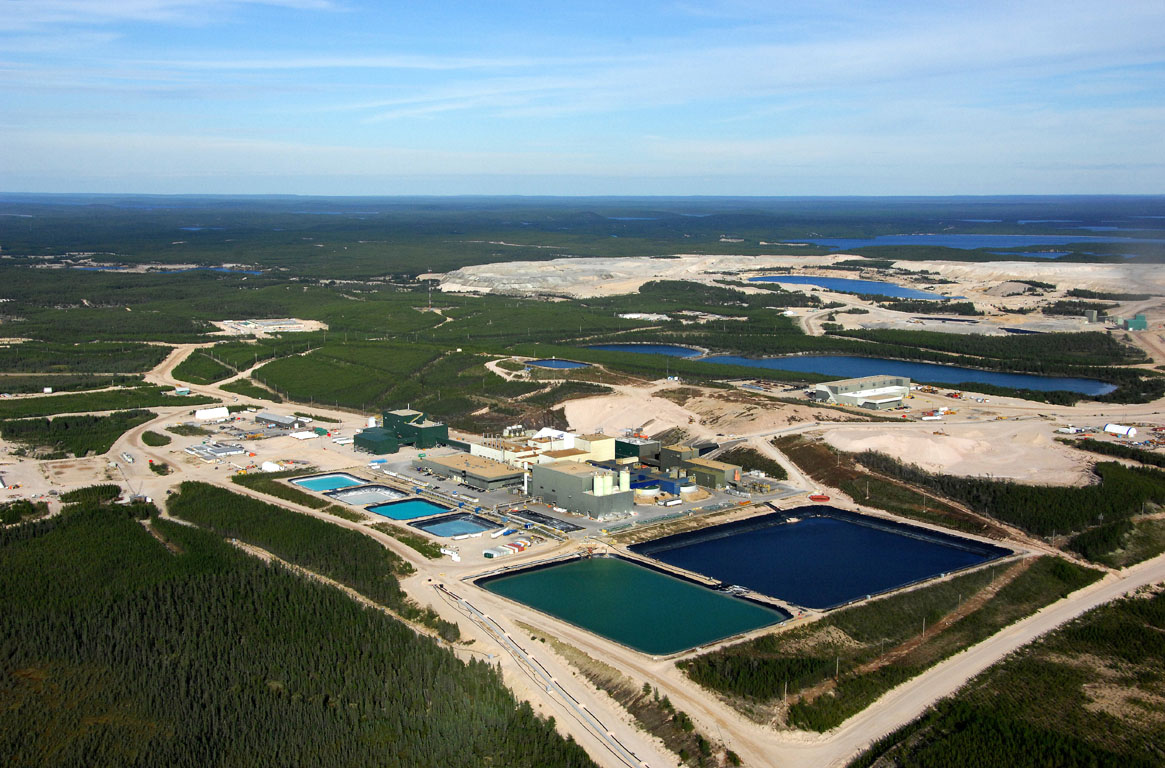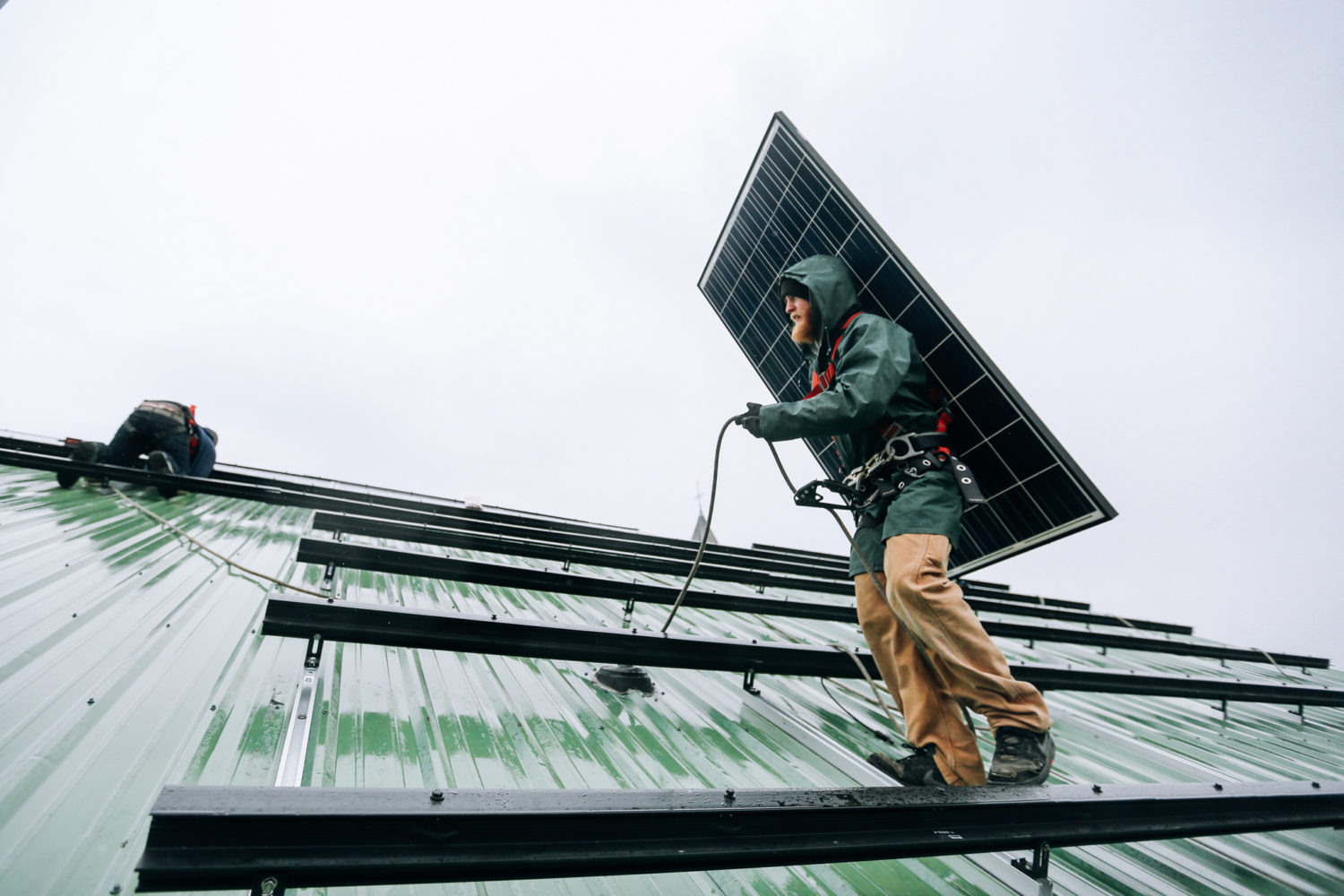
What’s scarier for Canadian communities — floods, or flood maps?
When maps showing areas most likely to flood are outdated, it puts people and property...
The federal government is gearing up for a big bet on small modular nuclear reactors, or SMRs. There have been rumblings about the technology for years, but the SMR Action Plan, released in December, lays out Ottawa’s role in advancing the technology.
“Small modular reactors represent the next great opportunity for Canada — helping us to phase out coal and electrify carbon-intensive industries such as mining and petroleum extraction,” Minister of Natural Resources Seamus O’Regan said in a statement.
The governments of Alberta, Saskatchewan, Ontario and New Brunswick have also thrown their support behind SMRs, signing a memorandum of understanding last summer.
“This safe, emerging technology has the potential to provide needed power to remote communities, to lower emissions and further to diversify Alberta’s energy sector,” Alberta Premier Jason Kenney said in an August speech announcing the agreement.
There is a real need for new electrical and energy technologies in remote communities. Diesel fuel is the current standard for off-the-grid communities and mines, causing air pollution, service disruptions and environmental liability. But whether small modular nuclear reactors are up to the task of replacing diesel is another question.
Here, we break down the details and through the spin surrounding modular nuclear reactors.
Sure, just give me a second and I’ll explain *checks notes* nuclear physics.
In a nutshell, the splitting of radioactive atoms like uranium into smaller elements releases heat. That heat is either converted to electrical energy, usually through turning water into steam to drive a turbine.
The key benefit is that nuclear energy doesn’t rely on burning fuel like oil, gas or coal. That means no carbon emissions from generating electricity, which is why it’s often classified as a “green” energy source.
But that green label is often called into question: nuclear waste remains highly radioactive and dangerous for much longer than a human lifespan.
The other risk is a meltdown — essentially an out-of-control chain reaction within the reactor, which generates much more heat than is needed with potentially disastrous results. And that has happened, even recently, with lingering effects: the Fukushima-Daiichi accident in Japan in 2011 has left hundreds of thousands of tonnes of contaminated water with no plan for disposal. For more information on worst-case scenarios (one might say too much information), just Google “Chernobyl.”
For one thing, small modular reactors are, well, small. And modular. The entire facility for some of these reactors could fit into an area about the size of a microbrewery, and be shipped by rail. Compare that with the footprint of a conventional nuclear facility like Ontario’s Bruce Power, which occupies four kilometres of shoreline. Some even fit inside submarines, ships or spacecraft.
But the “small” part more importantly refers to the power output: anything under 300 megawatts is considered “small.” (Bruce Power produces around 6,232 megawatts, enough to power more than a quarter of Ontario.)
For the North, though, where most communities don’t use anywhere near 300 megawatts of energy, think even smaller.
“In terms of use in the North, what would really qualify as ‘small’ is something in the tens of megawatts,” explained Esam Hussein, the University of Regina’s dean of engineering and applied science, who recently released an extensive review of the design of small modular nuclear reactors.
In many cases, the reactors would be less like a conventional nuclear plant, with fuel coming and going as it gets used up, and more like a battery. “You bring them in, they function for 20, 30 years, then you take them out,” Hussein said.
All in all there are more than 100 designs currently being explored, with many different fuels, technologies and advantages.

Remote communities in Canada dependent on diesel fuel (orange), natural gas (black) and heavy oil (purple). Map: Natural Resources Canada
Canada has a lot to gain by pursuing small modular nuclear reactors, and powering remote communities is just a part of that.
Another explanation for the governments’ eagerness could be the multitude of remote mining and fossil fuel projects in need of power.
“This is more about providing low-cost, reliable energy to major natural resource projects,” said Kristen van de Biezenbos, an associate professor at University of Calgary’s Haskayne School of Business. “There must be some kind of economic upside, and selling [SMRs] to rural Canada has no economic upside.”
Indeed, part of Jason Kenney’s enthusiasm for developing the technology for Alberta has been to get oilsands projects a cleaner source of energy. In-situ oilsands mines (those that melt the bitumen underground using steam) need a great deal of power, and currently that power mostly comes from natural gas.
Nuclear reactors also need their own fuel, and Canada — Saskatchewan, especially — is home to vast reserves of uranium. All of Canada’s current uranium mines are located in northern Saskatchewan and have had their fair share of environmental and human health impacts. From radiation exposure in workers to the contamination of clean lakes with radioactive water, seven underground and open-pit uranium mines in the province come at a cost.
Many of these mining operations also displaced Cree and Dene people from their homes and territories, Jamie Kneen, communications coordinator with MiningWatch Canada, told The Narwhal.
“Eighty-five per cent of the radioactivity that is in the rock is left behind in the mine waste. Then people need to know there are hundreds of millions of tonnes of that mine waste. And that that radioactivity does not diminish for, well, literally millions of years,” he added.
While the valuable uranium that is mined in Saskatchewan is shipped off for processing in Ontario, the waste products of polonium, radium and thorium are left behind in massive tailings ponds that pose a threat to local water tables, Kneen said.
“The people who live around there aren’t very happy about that.”
Canada has the world’s largest reserves of high-grade uranium according to Natural Resources Canada, and is currently the world’s second-largest producer. And that’s at today’s prices: with the higher demand that a large small modular nuclear reactor market would presumably generate, more uranium would be economically viable for mining.
And then there’s the tempting possibility of being a first mover internationally.
“I keep thinking that there’s an eye on an export market,” van de Biezenbos said.
Sure enough, the notion of exporting nuclear technology to other countries, especially developing countries like India looking to get off coal, makes its way into a lot of the press releases and reports surrounding the technology. Even Erin O’Toole’s campaign platform for the federal Conservative Party leadership included a section on exporting nuclear technology: “Canada is a world leader in safe nuclear technology and should continue that leadership role, including with Small Modular Reactors (‘SMRs’) that could assist in emission reduction in remote areas using Canadian technology that could be shared with and sold to the world.”

The Key Lake site in Saskatchewan where uranium was mined from 1983 to 1997. Milling ore for uranium continues on site to this day. Photo: Canadian Nuclear Safety Commission
With all the talk of how this technology can benefit remote, primarily Indigenous, communities, one might be forgiven for assuming Indigenous peoples are behind it — or, at least, consulted on these plans. But there’s little evidence that that is happening.
“There’s been very limited consultation,” said Nick Mercer, an energy researcher who recently published a paper on the views of Indigenous people in Labrador toward alternative energies.
“We had all kinds of findings we did not anticipate,” Mercer said. For instance, the paper found communities expressed a surprising amount of support for their existing diesel systems.
As for small modular nuclear reactors? Almost none. Just eight adults of 211 he interviewed expressed any support for the reactors. By contrast, even large-scale hydropower, which is deeply unpopular in Labrador due to projects like the Muskrat Falls and Churchill Falls plants, had 44 adults expressing support.
“It’s an absolutely shocking finding,” he said — though the underlying premise is understandable. People were “absolutely unwilling to support generation technologies they do not understand,” he said. Nuclear technology is an exceptionally complex and high-tech form of power generation, especially compared with the relatively simple concept of burning diesel.
As one participant put it in a 2016 study from the Fedoruk Centre: “Why would Inuvik be the guinea pig?”
But the affection for the current system was also linked with its job creation: diesel plants provide several well-paying local jobs. A small modular nuclear reactor that may act as more of a battery, with little maintenance and refuelling, might leave less money behind in the community.
Yes. Currently most northern and remote Canadian communities, and remote mines, are dependent on diesel for power. According to a report from the Pembina Institute diesel-dependent communities burn 682 million litres per year, at great financial and environmental cost. That requires a great deal of emissions just to get the fuel to the community, and then it’s burned.
Compared to the rest of the country, the three territories where most remote communities are located emit a small fraction of the CO2 equivalent of other parts of the country — just 2.5 megatonnes per year, less than a quarter of the emissions coming from Nova Scotia — but they produce twice as much carbon per unit of electricity than their on-the-grid counterparts.
Nuclear reactors, by contrast, produce no emissions except for those required to mine and transport the uranium to begin with.
The declining cost of wind and solar — and the ready availability of these technologies — might make the prospect of SMRs less attractive.
The question, according to Sara Hastings-Simon, senior research associate at the Payne Institute for Public Policy, is “do we need SMRs to reach a fully decarbonized power grid?”
Hastings-Simon raised the question in a recent episode of the Energy vs. Climate podcast, where she noted decarbonization could possibly be achieved with a combination of batteries, transmission lines and even hydrogen energy.
Add in the potential for geothermal, small run-of-river hydro, tidal energy and other sustainable energy alternatives and the pros of pursuing nuclear seem to diminish.
“I would keep [SMRs] in the back pocket as an option for the future, sure. But I think it’s being much oversold by many who are saying it’s the only answer,” Hasting-Simon said.

Solar panel installation. Some policy experts wonder if sources of renewable energy like wind and solar might be more readily available than small modular reactors. Photo: 100% Campaign / Flickr
That’s the catch; as they say, there’s no free lunch unless you’re sneaking into a conference. Eight decades into the nuclear age and we still don’t really know what to do with nuclear waste.
“Should we burden future generations for benefits we’re getting now?” Hussein asks. For him, the answer is yes, because he doesn’t see spent nuclear fuel as “waste” per se. “I wouldn’t call it waste because 500 years from now that material will be very valuable.”
Even that rosy outlook still leaves 500 years during which the spent fuel is a potentially dangerous material that can cause all manner of health problems if not handled correctly. Currently it’s stored at reactor sites and the Chalk River Laboratories in Ontario, first in deep pools to be cooled down, and then in containers that keep them isolated. But long-term, there is still not even a site selected for the storage of nuclear waste in Canada, 10 years into the site selection process.
But even more concerning to former federal Green Party leader Elizabeth May, is the connection between nuclear energy and nuclear weaponry.
The potential development of SMRs “definitely raises new and very serious weapons proliferation risks,” May noted on the Energy vs. Climate podcast. “This term small ‘S’ nuclear reactors makes people think that they’re kind of benign.” Concerns over the connection between nuclear energy and nuclear weapons stems from the fact that uranium enrichment processes used in energy are the same as those used to create weapons. Plutonium, a by-product of nuclear energy development, can also be used in nuclear weaponry.
SMRs can contribute more to concerns about nuclear proliferation because these small reactors are less efficient than large reactors and so create more waste.
“I think [SMRs] are actually, on the nuclear weapons proliferation side, even more distressing,” May said.
May also noted that Canada has not agreed to sign the new United Nations treaty for the abolition of nuclear weapons, which comes into force Jan. 22, 2021.
Nuclear energy has a history of horrifying accidents, with lasting consequences.
But small modular nuclear reactors aren’t another Chernobyl, Fukushima or Three Mile Island waiting to happen, as some fear when they hear the word “nuclear.” At the risk of sounding like the architects of the Titanic, proponents claim the small reactors are more or less un-meltdownable thanks to the inherent safety of their designs.
“Those three were all designed in the ’60s; we have learned a lot in the meantime,” Hussein said.
In fact, Hussein argues that the much more significant risk is failing to meet the challenge of climate change.
“Right now we are facing a very stark choice between finding a way of dealing with climate change and simply disappearing as a species,” he said. “Every single energy source has a price — and it has benefits. And it’s a decision as a society we have to take.”
— With files from Carol Linnitt
Update January 13, 2021 1:45 p.m. PST: This article was updated to reflect the fact that polonium is left behind in tailings ponds and not plutonium as previously stated. Small letters. Big difference. We very much regret that editor’s error.
Enbridge Gas will face Waterloo Region in a hearing before the Ontario Energy Board to renew an agreement that would allow the company to continue...
Continue reading
When maps showing areas most likely to flood are outdated, it puts people and property...

We’re suing the RCMP for arresting a journalist on assignment for The Narwhal. It’s an...

As glaciers in Western Canada retreat at an alarming rate, guides on the frontlines are...